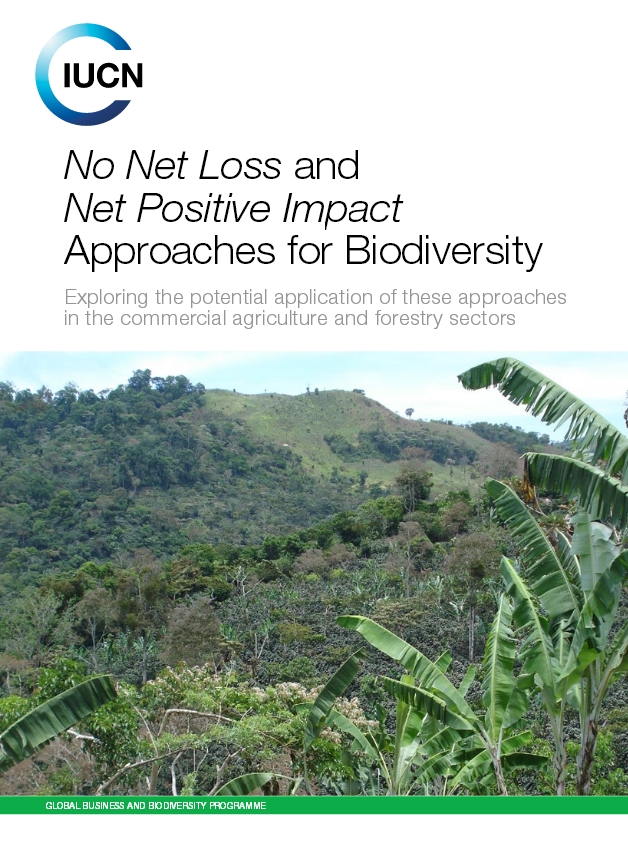 IUCN has published a report entitled: No Net Loss and Net Positive Impact Approaches for Biodiversity: Exploring the potential application of these approaches in the commercial agriculture and forestry sectors (see also my recent post on this)
IUCN has published a report entitled: No Net Loss and Net Positive Impact Approaches for Biodiversity: Exploring the potential application of these approaches in the commercial agriculture and forestry sectors (see also my recent post on this)
IUCN’s Global Business and Biodiversity Programme invites you to a webinar to present a summary of this new report, discuss its implications and possible next steps.For more information see a short summary of the report below.
When and how does the IUCN webinar take place?
When: Thursday 11th June 2 options, either 10.00 CET or 16.00 CET.
Please RSVP to Nadine.McCormick@iucn.org with your availability for the two time options for the webinar. The log-in information will then be sent directly.
Summary of the report
In this new report, IUCN explores the challenges and opportunities of the commercial agriculture and forestry sectors adopting No Net Loss (NNL) and Net Positive Impact (NPI) approaches that hitherto have been applied primarily in the extractives and infrastructure development sectors. The report acknowledges that these sectors present a much greater challenge, due in part to greater biodiversity impacts, a wider array of stakeholders involved, less financial capital and limited exposure to financial sector standards than the extractives sectors. Yet, the report, finds that under certain conditions NNL and NPI approaches to agriculture and forestry landscapes associated with companies’ operations and supply chains could have a greater impact in reducing biodiversity loss than in other sectors.
The report concludes that NNL/NPI is potentially applicable to the commercial agriculture and forestry sectors under two main conditions and based on the application of a five stage process, which includes the full implementation of the mitigation hierarchy. Native biodiversity needs to be enhanced and/or species or areas of conservation concern protected and agriculture and forestry production species need to be diversified onsite, and/or, productivity and natural resource use efficiency improved and safeguards to protect natural habitats offsite against conversion are needed. Furthermore, the risk of biodiversity losses would outweigh opportunities for conservation gain where the development project will cause largescale impacts on ecosystems and/or species in natural areas where regional biodiversity loss is not occurring; where there is a risk that the protection measures and safeguards for natural habitat areas and/or species and areas of conservation concern in and around the production site will be poorly designed or will not be enforced effectively; and where the identification of relevant biodiversity values to establish NPI goals has not been derived from existing societal biodiversity conservation goals in policies or plans (e.g. national biodiversity policies, strategies, action plans, international policy), and does not take account of local and other relevant stakeholder input (including farmers, foresters, and resident communities as applicable).
Information retrieved from the latest (May 2015) BBOP Newsletter
